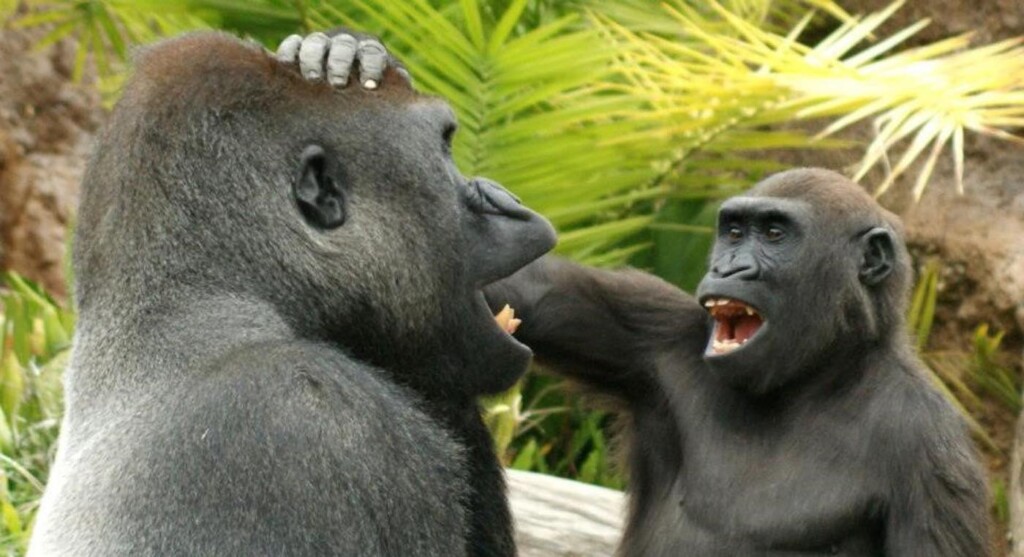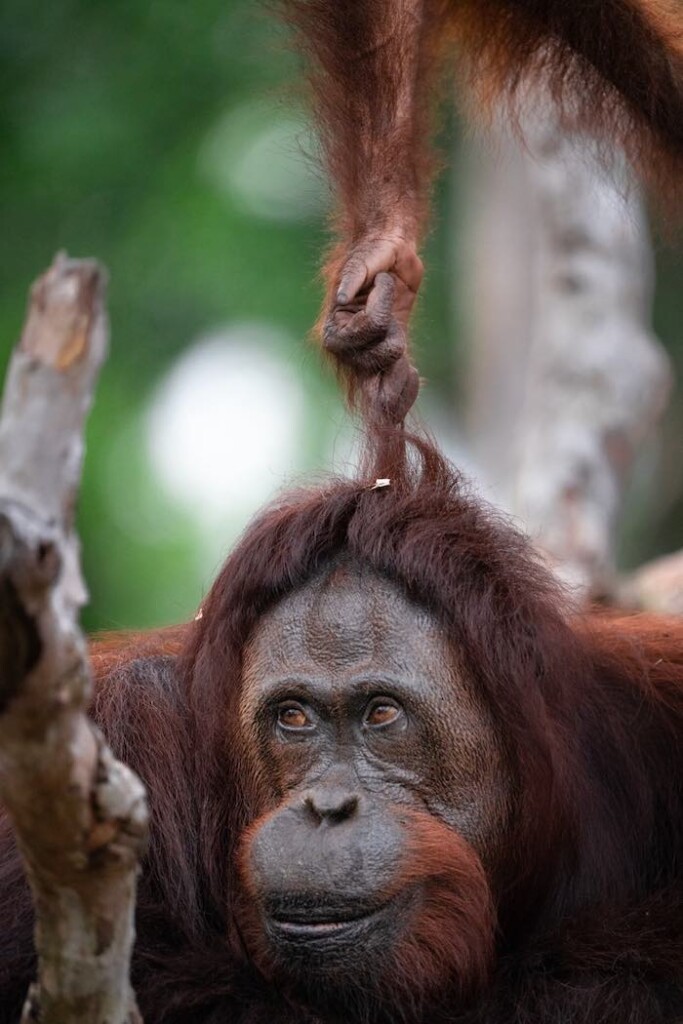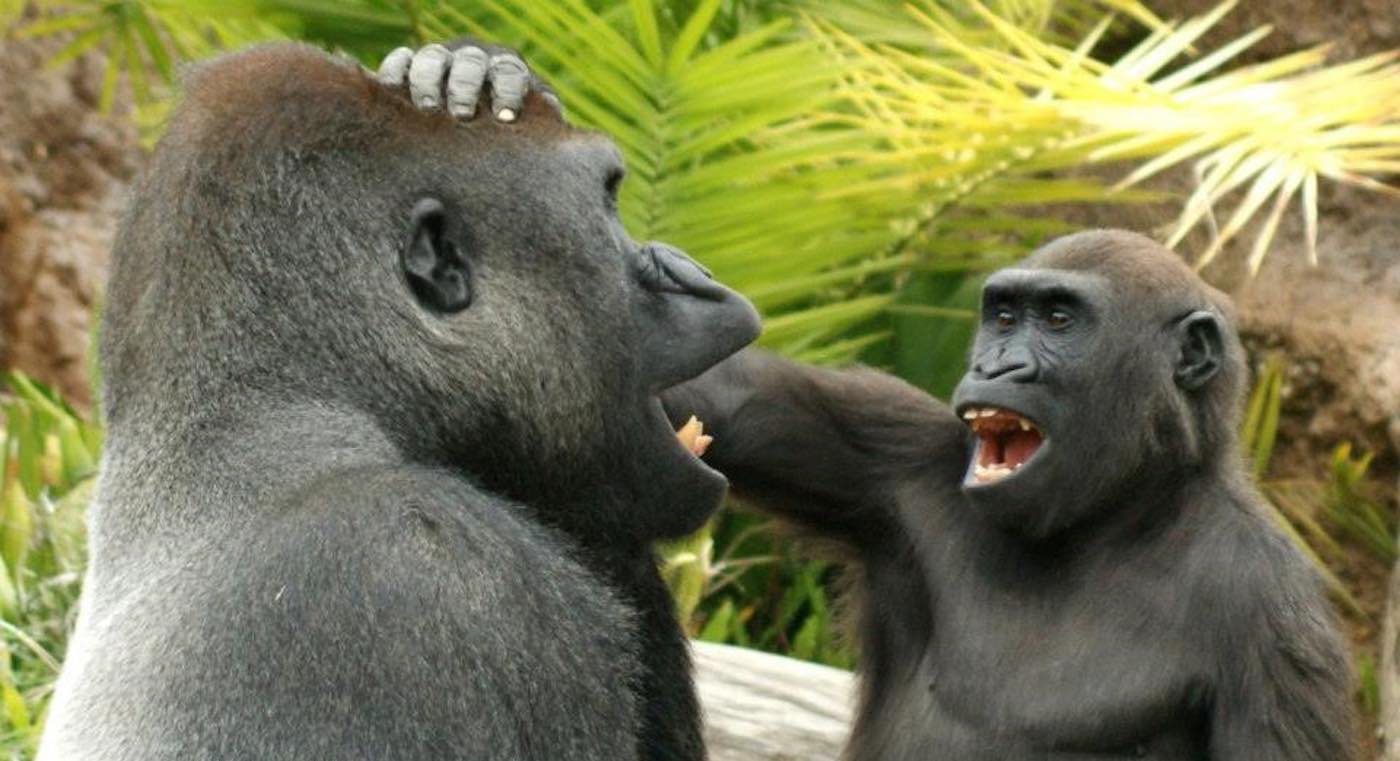
Apes have a sense of humor similar to humans, suggests a new study that showed four species of great apes each playfully teasing each other.
The team of cognitive biologists and primatologists found that, similar to joking behavior in humans, ape teasing is provocative, persistent, and includes elements of surprise and play.
Because all four great ape species used playful teasing—orangutans, chimpanzees, bonobos and gorillas—the research team believes it likely that the prerequisites for humor evolved in the human lineage millions of years ago.
The researchers said that joking is an important part of human interaction that draws on social intelligence, an ability to anticipate future actions, and an ability to recognize and appreciate the violation of others’ expectations.
Teasing has much in common with joking, and playful teasing may be seen as a “cognitive precursor” to joking. (Watch the sweet video at the bottom…)
The first time playful teasing in humans emerge is as early as eight months of age—even before babies say their first words. Infants tease their parents by playfully offering and withdrawing objects, violating social rules—known as provocative non-compliance—and disrupting others’ activities.

The new study, published in the journal Proceedings of the Royal Society B, was conducted by scientists from the University of California in Los Angeles and San Diego, Indiana University, and the Max Planck Institute of Animal Behavior in Germany.
“Great apes are excellent candidates for playful teasing, as they are closely related to us, engage in social play, show laughter and display relatively sophisticated understandings of others’ expectations,” says study first author Dr. Isabelle Laumer.
MORE SIMILARITIES: Some Generous Apes May Help Explain The Evolution Of Human Kindness
The researchers classified spontaneous interactions as playful, mildly harassing, or provocative—and during the interactions, the team observed the teaser’s actions, bodily movements, facial expressions, and how the targets of the teasing responded in turn.
They also assessed the teaser’s intentionality by looking for evidence that the behavior was directed at a specific target, that it persisted or intensified, and that teasers waited for a response from the target, as seen in the video below.
The team found that orangutans, chimps, bonobos and gorillas all engaged in intentionally provocative behavior, frequently accompanied by characteristics of play.
They identified 18 distinct teasing behaviors. Many of the behaviors appeared to be used to provoke a response, or at least to attract the target’s attention.
“It was common for teasers to repeatedly wave or swing a body part or object in the middle of the target’s field of vision, hit or poke them, stare closely at their face, disrupt their movements, pull on their hair or perform other behaviors that were extremely difficult for the target to ignore,” said the study’s senior author UCLA Professor Erica Cartmill.
WATCH: Chimps Show Researchers They’d Cook if Given the Chance
Although playful teasing took many forms, the researchers noted that it differed from play.
“Playful teasing in great apes is one-sided, very much coming from the teaser often throughout the entire interaction and rarely reciprocated,” said Prof. Cartmill. “The animals also rarely use play signals like the primate ‘playface’, which is similar to what we would call a smile, or ‘hold’ gestures that signal their intent to play.”
The team found playful teasing mainly occurred when apes were relaxed, and shared similarities with behaviors in humans.
“Similar to teasing in children, ape teasing involves one-sided provocation, response waiting—in which the teaser looks towards the target’s face directly after a teasing action—repetition, and elements of surprise,” says Dr. Laumer.
LOOK: Apes Remember Friends Even Though They’ve Not Seen Them for 25 Years
The researchers noted that Jane Goodall and other field primatologists had mentioned similar behaviors happening in chimps many years ago, but the new study is the first to systematically study playful teasing.
“We hope that our study will inspire other researchers to study playful teasing in more species in order to better understand the evolution of this multi-faceted behavior,” said Laumer.
“We also hope that this study raises awareness of the similarities we share with our closest relatives.”
Watch the cute video below…
DON’T MESS AROUND–Share The Fun Video With Pals on Social Media…




















